As one of our founders is Armenian-American, Asia Art Tours was thrilled to speak with writer Liana Aghajanian on the culinary history and political significance of Armenian food. Liana, besides being a prolific writer and reporter, is also the founder of Dining in Diaspora which aims to document the food of the truly global Armenian Diaspora.
Our conversation covers current events in Armenia, The Armenian Genocide and how food connects us to stories larger than ourselves. No matter your background, I hope reading this story helps you feel more connected to your own culinary history and heritage.
Asia Art Tours: Your food writing often includes solemn reflections about the painful history of exile and state-violence that was inflicted on Armenians. I (personally) find the weight of genocide to be a heavy burden when writing about my Armenian family.
What have been your best practices or writing tools for exploring (and reflecting) on the Armenian Genocide while centering the culinary and food history of Armenians? How can we honor the genocide, while still enjoying and celebrating our food?
Liana Aghajanian: The Armenian culinary experience is extremely rich, and sometimes even confusing and contradictory – we have a complicated relationship with history, with other countries and people – and with each other. In my work, I try to balance that complexity, and that means honoring both the genocide and the deep ripple effect it has left behind that are still felt today, while also celebrating not only what we eat – but how cuisine changed, why it matters, and the stories the food can tell.
I believe there’s room for all of it to exist side by side, because both the tribulations we’ve endured and the triumphs we’ve had are what make the Armenian experience whole. You can’t have one without the other, and food is the perfect vehicle in order to tell that intricate, often tangled story.
 (Choreg – Photo Credit: Dining in Diaspora)
(Choreg – Photo Credit: Dining in Diaspora)
Armenians cannot physically access their ancestral lands. The descendants of genocide survivors use food to access those places – in the kitchen, they have the opportunity to (temporarily) recreate edible heirlooms. And as Armenian communities continue face erasure in several parts of the world today, to me, every act of Armenian cooking is a form of resistance.
Asia Art Tours: Another complex theme of your writing that you ask and explore is the question ‘What is Armenian Food?’. Could you explain for readers unfamiliar with Armenians migration and diaspora why this is such a complicated question? How do you now answer this question when it’s posed to you?
Liana Aghajanian: Armenian history not only spans thousands of years, it also transcends the borders of the world as we know them today. Armenians have always existed at the crossroads of different empires, their ancestral lands becoming a battleground for warring kingdoms and rulers – a fate which we have often suffered immensely for. Culinary distinctions definitely emerged overtime, but the cataclysmic event which influenced the differences in modern-day Armenian cuisine was the genocide of 1915, where over one million Armenians (as well as Assyrians and Greeks) were systematically killed by the Ottoman government. Those who survived were displaced and dispersed across the world, becoming a global diaspora. Many came to the U.S, some went to Europe and others escaped to countries in the Middle East where Armenians already had a long presence, like Syria, Lebanon, Iran, and Palestine.
This meant opportunities for Armenians to mingle with and contribute to foodways of these regions, and because of this, distinctions began to emerge between different Armenian communities – both in dishes, ingredients, as well as methods. A third generation Armenian-American from Fresno is going to have a different answer to the question “What is Armenian food?” from a person born and raised in the Republic of Armenia, and those two will also have a different answer from a Syrian-Armenian from Aleppo.
For me, food is a dynamic, living culture that has always been shaped by global events, is continuously changing and is shared. Armenian food means different things to different people, and that’s perfectly ok. I appreciate and respect Armenian food in all of its variations – it makes my work that much more interesting and reveals unexpected stories. It’s a testament to our diverse history and journey, not a hindrance to it.
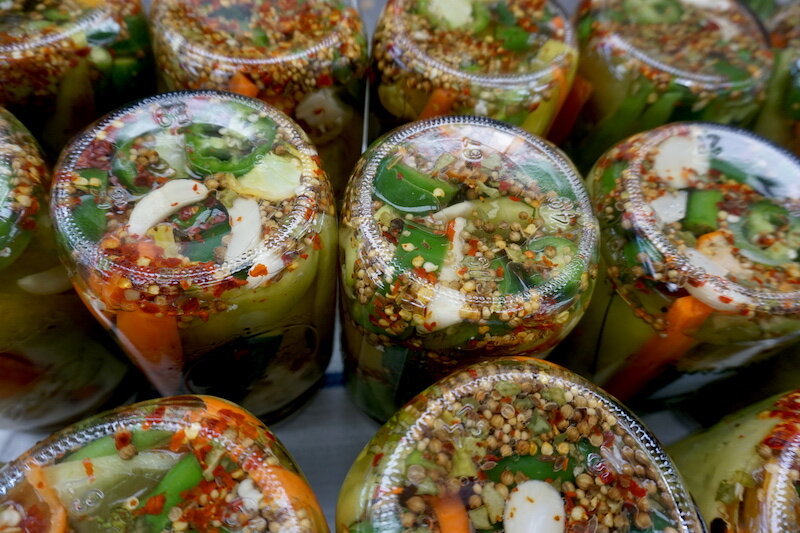 (The Armenian dish known as Torshi. When I first saw this as a young boy, I was horrified. Soon my horror turned to delight as my grandmother opened the briny jar and let me sample the pickled delicacies within. Photo Credit: Dining in Diaspora)
(The Armenian dish known as Torshi. When I first saw this as a young boy, I was horrified. Soon my horror turned to delight as my grandmother opened the briny jar and let me sample the pickled delicacies within. Photo Credit: Dining in Diaspora)
Cooking is an easily accessible language which allows you to explore who you are, question the world, learn about the past, but also forge a path into the future despite the fact that there are forces still at play who are rooting for your demise.
Asia Art Tours: Throughout your culinary career I imagine one’s tastes change. When you began your career as a writer, what Armenian dish did you feel most connected to? And now so many years later, what dish do you feel most connected with in this chaotic year of 2020? (The answer for me is Choereg in normal times, and Torshi for 2020.)
Liana Aghajanian: It’s impossible to pick just one because my preferences are always changing depending on who I meet and which dishes I try. The ones I felt most connected to were of course what was made in my home, the ones I grew up eating in my Iranian-Armenian household, like quince jam, harissa/keshkeg and halva. I spent a lot of time with my grandmothers as a kid, both of whom hailed from different places, and I’m thankful for the front row seat I got to experience their diverse cooking.
Like so many, I began to cook and bake more frequently in 2020, and one of the dishes that stuck with me was “tahinov hatz” which means “tahini bread.” They’re simple, traditional pastries made with tahini, cinnamon and sugar that Armenians had a big hand in popularizing in places like Lebanon and Palestine, and the perfect companion to a cup of coffee.
 (Quince Jam – Photo Credit: Dining in Diaspora)
(Quince Jam – Photo Credit: Dining in Diaspora)
A third generation Armenian-American from Fresno is going to have a different answer to the question “What is Armenian food?” from a person born and raised in the Republic of Armenia, and those two will also have a different answer from a Syrian-Armenian from Aleppo.
Asia Art Tours: I recently interviewed Dr. Sylvia Alajaji on how Armenian Music was made more complex as it integrated into various Diasporas: Kef Music, the pop hit: Karoun Karoun and the Contemporary Musician Tigran Hamasyan being a few examples.
From your writing on restaurants like Beirut’s Mayrig to L.A’s ‘Little Armenia’ (where you might find Al Pastor in your piroshkis), could you explain how Armenian restaurants act as cultural arks for Armenian cooking, while also acting as spaces for culinary exchange? (How can you preserve something while also letting it change and evolve?)
Liana Aghajanian: The idea of Armenian food being preserved yet also changing through Armenian restaurants is perhaps most evident in Los Angeles, where Armenians from all over the world with different upbringings and backgrounds, from refugees from Syria to third, fourth generation Armenian-Americans mingle. No where has afforded Armenians with different backgrounds the opportunity to interact with each other like LA has, and restaurants are one space where those differences are literally, and enthusiastically consumed. Also, because the city is home to so many different ethnic communities, you see those cultural exchanges seep into the food naturally – whether it’s Mexican-Armenian street food, or ice cream flavors inspired by Armenian pastries. In Detroit, where I’ve been based for several years, culinary exchanges between Armenians (Armenian-Americans whose ancestors came to the U.S. after the genocide and newer immigrants from the Republic of Armenia) are also occurring in restaurants in fascinating ways.
I think evolution with food is inevitable. It happens naturally. There’s many young Armenian chefs who are expanding on Armenian food traditions in innovative ways. At the same time, through the response to my project, I’ve realized there’s an appetite to learn about, preserve and replicate Armenian culinary heritage because it’s a portal to history that cannot be accessed in other ways.
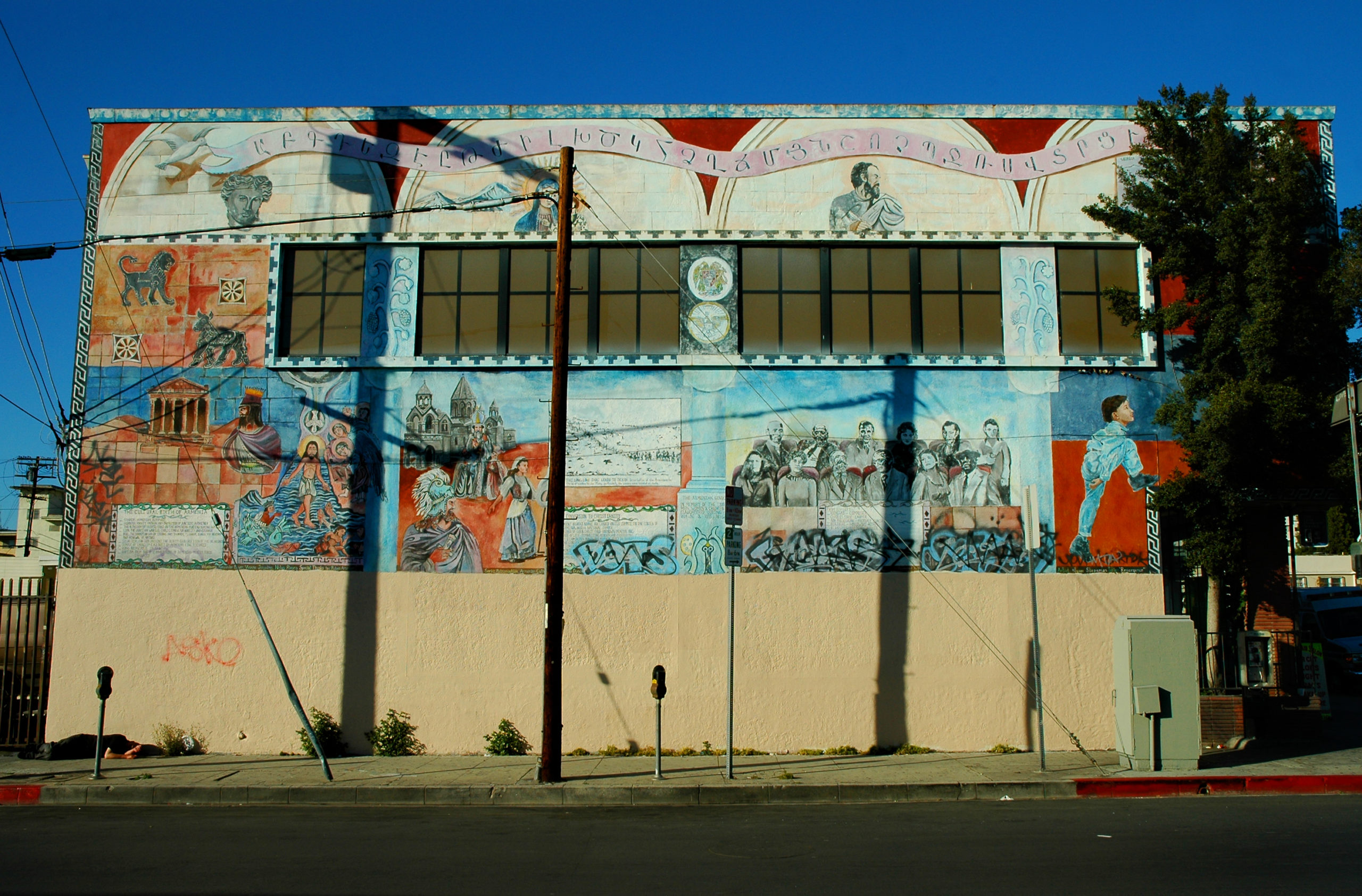 (Mural depicting the history of Armenia in Los Angeles’s “Little Armenia”. Photo Credit: Wikipedia)
(Mural depicting the history of Armenia in Los Angeles’s “Little Armenia”. Photo Credit: Wikipedia)
Armenians lived on those lands for thousands of years. They toiled on them, cultivated them, and sustained them. They built a lot of foundations for that shared food culture to flourish and contributed to its existence. They have a right to that cuisine that they helped create and continue to make in their homes across the diaspora just as much as anyone else.
Asia Art Tours: I truly appreciated your story about the Armenian ‘cucumber’ (Muskmelon) and its culinary impact in the United States. As we near the end of our interview, I wanted to ask broadly speaking what has been the impact of Armenian cuisine or ingredients in the United States? And how have other culinary cultures influenced Armenian-American cooking?
Liana Aghajanian: The impact has been immense, from introducing ingredients now firmly part of the multicultural American diet, to changing the restaurant landscape and revolutionizing the agricultural industry of the country. Most of this impact remains hidden and unexplored – and that’s what my project is about, attempting to uncover the Armenian culinary footprint and how it changed America.
And of course, the influence of other cultures in Armenian-American cooking is there too in several ways. One example that I love: the recipes often included in Armenian-American cookbooks, particularly in the 1960s and 70s like, “Mandarin Orange Chicken Salad” or “German Chocolate Cake.” You’ll be flipping pages of recipes for stuffed grape leaves, variations on pilaf and lentil stew, and you’ll come across very popular recipes from the era the cookbook was first published in.
 (Armenian Cucumber – Photo Credit: Wikipedia)
(Armenian Cucumber – Photo Credit: Wikipedia)
No where has afforded Armenians with different backgrounds the opportunity to interact with each other like LA has . . . because the city is home to so many different ethnic communities, you see those cultural exchanges seep into the food naturally – whether it’s Mexican-Armenian street food, or ice cream flavors inspired by Armenian pastries.
Asia Art Tours: You have a brief quote in an article for EATER that I want to expand upon: “As the Armenian population in Anatolia was essentially destroyed during the genocide, its cuisine was absorbed into the newly formed Republic of Turkey (where dishes retained Turkish names).”
We live in a time of global camps and massive state-led campaigns against minority groups, with nationalism & racism as the driving forces behind this violence. Based on your research into Armenian diasporic cooking and this idea of ‘consuming the enemy’ we leave behind, I wanted to ask what does it mean for people to consume the food of those they tried to destroy? To produce and consume the culinary history of those that the nation has taught you to hate?
Liana Aghajanian: Foods in Turkey are generally not recognized as having any kind of Armenian origin or contribution, so that concept doesn’t even exist. But it also goes beyond this – Armenians are often denied agency when it comes to their own cuisine. They’re frequently accused of “stealing” food and making “claims” to dishes which accusers say don’t belong to them. In some ways, this denial is an extension of the genocide, it’s continued cultural erasure and it reinforces nationalistic tendencies because food is the most accessible thing to express those sentiments through.
These sentiments are insulting, baseless and also short-sighted. They reveal a real lack of understanding about food and the way it moves through time and ignores borders and nationalities – and it also divorces food from the actual humans who make it. Armenians lived on those lands for thousands of years. They toiled on them, cultivated them, and sustained them. They built a lot of foundations for that shared food culture to flourish and contributed to its existence. They have a right to that cuisine that they helped create and continue to make in their homes across the diaspora just as much as anyone else.
However, we also can’t use this idea of a shared food culture as some kind of “patch over” when it comes to addressing the calculated slaughter of an entire population. Sharing food culture isn’t a substitute to talking about real issues, it can be a gateway to ask hard questions, to get to deeper truths and ultimately find a path to justice.
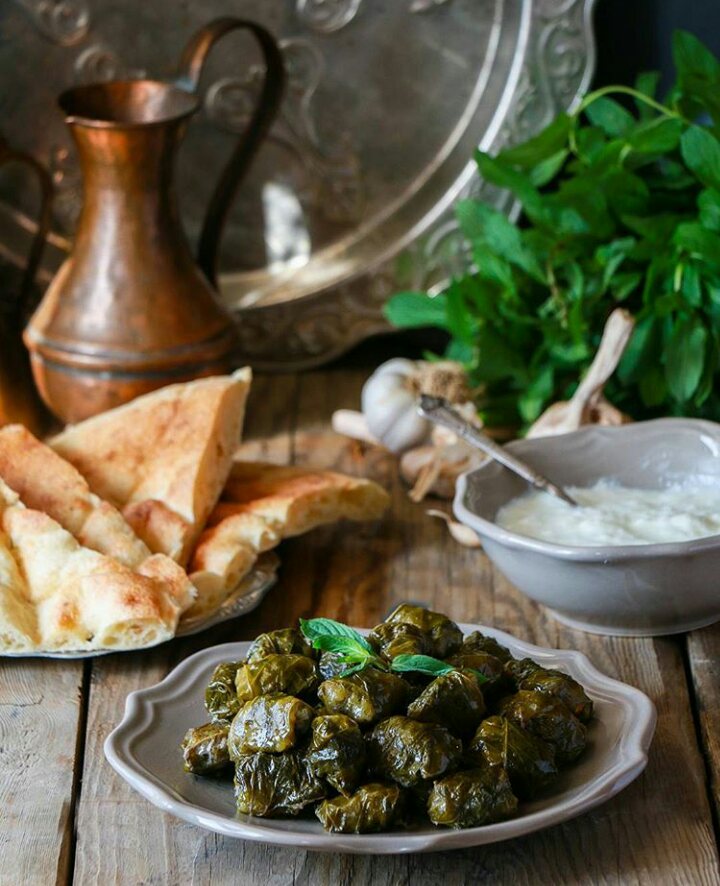 (Dolma is a food beloved by Azeri, Armenians and Turkish peoples. Sadly even though food can cross borders, nationalism has prevented solidarity from developing between these bitter enemies. Photo Credit: Wikipedia)
(Dolma is a food beloved by Azeri, Armenians and Turkish peoples. Sadly even though food can cross borders, nationalism has prevented solidarity from developing between these bitter enemies. Photo Credit: Wikipedia)
We also can’t use this idea of a shared food culture as some kind of “patch over” when it comes to addressing the calculated slaughter of an entire population. Sharing food culture isn’t a substitute to talking about real issues, it can be a gateway to ask hard questions, to get to deeper truths and ultimately find a path to justice.
Asia Art Tours: And in this moment of global protests and uprising, are their ways that Armenian cooking or ANY cooking can be an act of resistance? Or how cooking, eating and food more generally can push back on the nationalist narratives that are driving such violence in the world today?
Liana Aghajanian: When you come from a background that includes multiple bouts of systemic ethnic cleansing, forcible displacement and the denial that any of those cataclysmic events ever occurred like Armenians do, it definitely is. It means that you continue to thrive despite what your population was subjected to, you have a strong connection to the lands that you’re from (and were removed from) and that you’ll never forget it even if others want you to.
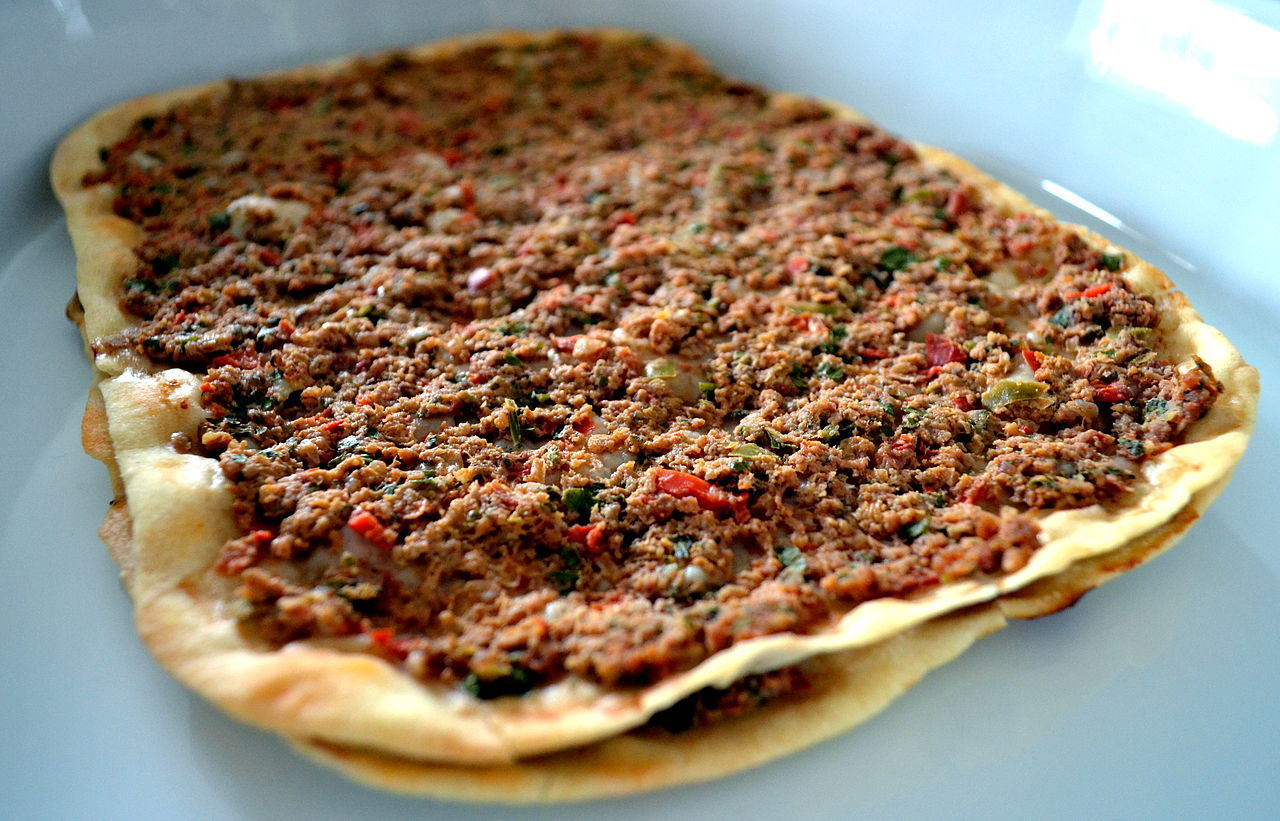 (Armenian ‘Pizza’ also known as Lahmacun. During pre-Covid times my father would often joke about opening a restaurant that only served this dish, and the even more obscure Armenian dish known as Pacha. Photo Credit: Wikipedia)
(Armenian ‘Pizza’ also known as Lahmacun. During pre-Covid times my father would often joke about opening a restaurant that only served this dish, and the even more obscure Armenian dish known as Pacha. Photo Credit: Wikipedia)
Armenians cannot physically access their ancestral lands. The descendants of genocide survivors use food to access those places – in the kitchen, they have the opportunity to (temporarily) recreate edible heirlooms. And as Armenian communities continue face erasure in several parts of the world today, to me, every act of Armenian cooking is a form of resistance. This is what drives my project and my passion to continue working in the realm of Armenian diasporic foodways – cooking is an easily accessible language which allows you to explore who you are, question the world, learn about the past, but also forge a path into the future despite the fact that there are forces still at play who are rooting for your demise.
RECIPE – Armenian Madzoon (Yogurt) Spice Cake
Liana was also kind enough to provide us with a recipe that best defined her outlook and perspective on our interview.
Liana Aghajanian: I think this one about an Armenian Madzoon (Yogurt) Spice Cake might be a good one to include, it is winter friendly, but also captures the essence of my project – an old Armenian recipe that was brought to America, altered because of the environment and then printed in an American newspaper.
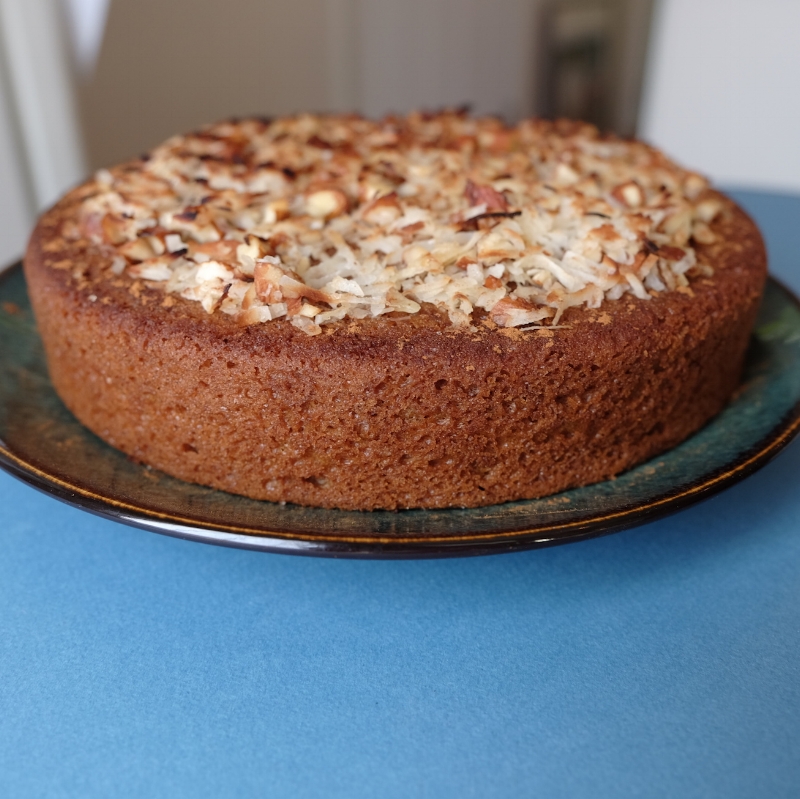
Armenian Yogurt Spice Cake
2 cups all-purpose flour
1/2 cup butter
1 1/2 cups sugar
1 teaspoon baking powder
1 teaspoon baking soda
1 teaspoon cinnamon
1 teaspoon nutmeg
1/4 teaspoon salt
3 eggs
1 cup plain yogurt
Topping
1/2 cup firmly packed light brown sugar
1 tablespoon of melted butter
1/2 cup chopped almonds
1/4 cup sweetened shredded coconut
1/4 cup milk
1/4 teaspoon pure vanilla extract
Preheat oven to 325. Grease and flour a 10-inch tube pan (I used a flat pan, but you can use anything cake batter can be poured into). Combine all dry ingredients and set aside. One alternative to using separate spices is to buy pumpkin pie spice mix, since it also has cloves, which adds a really nice taste.
In another bowl, cream 1/2 cup softened butter with sugar until light and fluffy. Add eggs and beat until smooth. Alternate adding dry mixture and yogurt, beginning and ending with the flour mixture. Beat until smooth. Pour batter into pan. Bake for about 1 hour, until a pick inserted in the center comes out smooth.
Let cool after turning cake out of the pan.
To make the topping, combined brown sugar, melted butter, almonds, coconut, milk and vanilla. Spoon mixture on top of the cake and place it under a hot broiler until lightly brown ( be careful to check on this probably every 10 seconds so you don’t turn your beautiful cake into a very charred and crispy cake)
 (Photo and Recipe Credit: Dining in Diaspora)
(Photo and Recipe Credit: Dining in Diaspora)
For more w. Liana you can visit her personal website here and her website Dining in Diaspora here.
